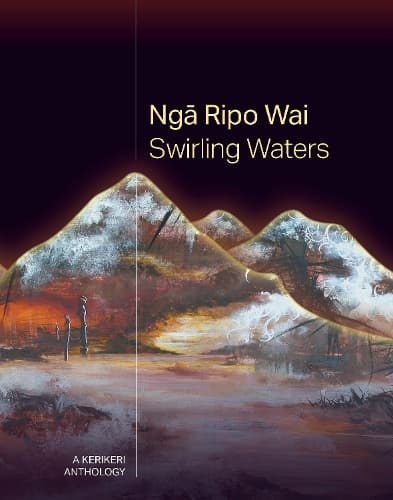Review: Ngā Ripo Wai: Swirling Waters
Reviewed by Paula Green
I grew up in Northland and carry the summer sun, the tropical dumps of rain, the coastal beauty in my bones. Kerikeri is a vital landmark in my memory banks, so it is with delight I read Ngā Ripo Wai: Swirling Waters, an anthology of multi-genre writings linked to the area.
Editors Kathy Derrick, Jac Jenkins and Kipa Munro have gathered poetry, prose, interviews and histories. The authors range across generations, from school students to rangatira, from local residents to those who have passed through. Some names will be familiar (Fiona Kidman, Glenn Colquhoun, Vivienne Plumb, Briar Wood, Vaughan Rapatahana) while others will not.
An introduction suggests the anthology is a beginning, that not all writers could be included, and as anthologist I know the difficulty of the selection process. Poet Robert Sullivan with his ancestral ties to the area immediately sprang to mind, but I want to focus on the voices presented to me. The opening piece, Te Riu o Ngāti Rēhia, stands as a mihi, welcoming us to writing that embraces place, people, experience, history and memory from multiple points of view. There is Tokerau Mountain, Kororipo Pā, Kerikeri River, the iconic stone store, the inlet, various mission houses, the arts communities. The physicality of place is enhanced by the way place is peopled; layered with complex and at times conflicting histories and experiences.
Whenever I visit the area the effect upon me is palpable, the history, the spirituality. Vaughan Rapatahana’s poem, ko kerikeri he tūruapō kerikeri as epiphany, strikes a deep chord as it might for many of the contributors.
I was younger then.
the yaws of yore a stanchion;
a stone store painted solid
onto the canvas of the river.
I am older now.
I reflect more than any mirror:
ko kerikeri he tūruapō,
a succour for my soul.
The anthology is structured like a piece of music that allows distinctive notes, chimes, chords, tones, ideas. Poet Lynn Jenner asks whether Kerikeri is a settled place on the blurb. She proposes it is both settled and unsettled, and that such tension enriches her reading experience. Kerikeri is claimed as “the longest continually occupied joint Māori-European settlement.” Glenn Colquhoun’s Waves of settlement faces notions of settlement/unsettlement/settling/unsettling in poetic word play that is as serious as it is fun. I am drawn to the presence of Te Reo Māori, the Māori voices, and a part of me wants more than a handful. This from Kipa Munro is effervescent on the tongue:
ko te ārautanga
o tōku herenga
he ātarangi
tomorrow’s sunshine
is my reward
for yesterday’s shadows
Poet Piet Nieuwland also writes with a deft touch. At Kerikeri River is a mesmerising love poem, elsewhere he muses on the naming of the Northland river koromiko.
Editor Kathy Derrick suggests, “she is striving to change the narrative around how authors produce, publish and are recognised for their work.” In my view, Aotearoa is alive with terrific literary initiatives and I see Ngā Ripo Wai as a one of these. It begins with the local and it makes the local significant as it celebrates complexity, connection, creativity.
Fiona Kidman’s succulent piece entitled Lemons closes the book. Kidman is transported from the fragrant lemons in Menton, to a childhood memory of her mother picking citrus fruit to earn money: “I had come to Menton to find my way into writing a memoir, but there it was, the whole map of my childhood laid out before me. I breathed in and out again. I surrendered.”
And this closing thought returns me to the beginning, to the mihi that welcomes us into a suite of engagements, anchors, epiphanies. To the way writing sustains who and how we are, in diverse communities, with earth under our fingernails. As readers and writers, along with Kidman, we are breathing in and out the possibilities of words.
Reviewed by Paula Green
